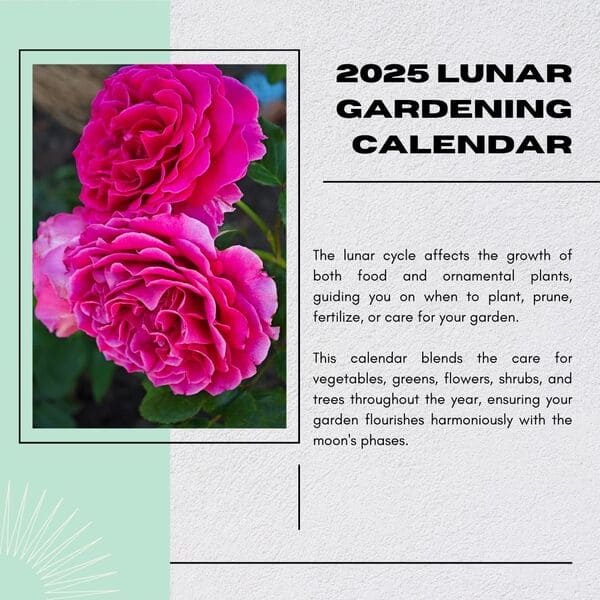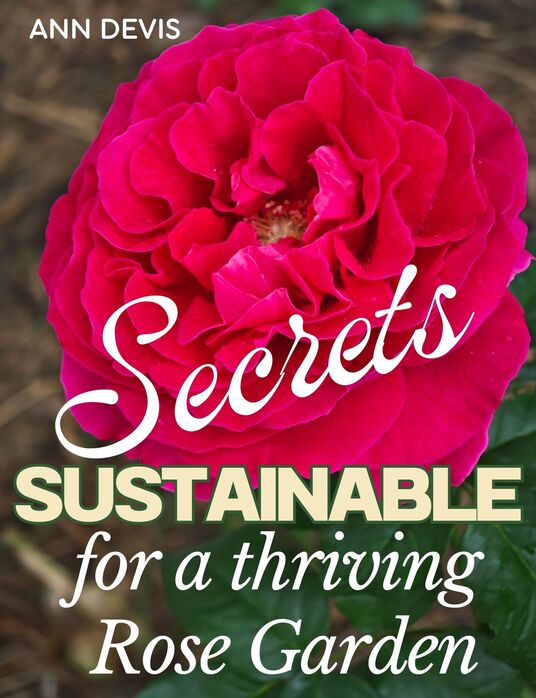Planting rose companion plants is a great way to enhance the health and beauty of their favorite flowers and create a beautiful garden design. Choosing the right companion plants can mean healthier roses, fewer pests, and an aesthetically pleasing garden. Let’s get to the bottom of this question:
What is the best companion plant for roses?
The best companion plants for roses contribute to the roses’ overall well-being by repelling pests, improving soil health, or providing visual interest. One standout companion for roses is the classic herb Lavender (Lavandula spp.). Lavender shares a love for well-drained soil and brings its aromatic charm to the garden. The fragrant oils of lavender act as a natural deterrent for pests like aphids and mosquitoes, making it an ideal partner for roses.
Other stellar rose companions:
Marigolds (Tagetes spp.):
As vibrant and easy to care for as their counterparts, marigolds emerge as exceptional companions for roses. Beyond their radiant hues, marigolds are pivotal in deterring pests, particularly nematodes, which can threaten rose roots. Planting marigolds near roses adds a burst of color and contributes to a healthier, pest-resistant environment.

Geraniums (Pelargonium spp.):
These vibrant, easy-to-care-for plants make excellent companions for roses. Geraniums help repel Japanese beetles and can provide a colorful ground cover beneath the rose bushes.
Alliums (Allium spp.):
The onion family, including chives, garlic, and ornamental alliums, can deter aphids, a common threat to roses. Additionally, the tall blooms of ornamental alliums can add vertical interest to the garden.
Nasturtiums (Tropaeolum spp.):
Known for their edible flowers and foliage, nasturtiums serve a dual purpose in the rose garden. They act as a sacrificial plant, attracting aphids away from the roses, and their trailing nature can provide ground cover.
The Best Companion Plant—Varies with Rose Variety:
It’s essential to note that the ideal companion plant can vary based on the specific rose variety and the local climate. Some roses might thrive when accompanied by certain plants, while others may benefit from different companions. Therefore, a thoughtful approach to pairing companion plants with specific rose varieties ensures a harmonious and mutually beneficial environment.
The journey into companion planting is exciting, promising healthier roses and a more vibrant and dynamic garden.
You can read more information about rose companion plants here.

Basic Principles of Selecting Companion Plants for Roses
Companion planting isn’t just about choosing plants that fend off pests or enhance soil quality; it’s also an art that involves careful consideration of design, structure, and the changing seasons. Understanding the basic principles of selecting companion plants is essential for those seeking to create a harmonious small rose garden. Let’s explore these principles, including envisioning a seasonal scheme, varying height, shape, and form, and the strategic use of perennials.

Varying Height, Shape, and Form:
Diversity in the garden’s structure adds visual interest and prevents monotony. When selecting companion plants for roses, vary the chosen species’ height, shape, and form. Tall, spiky plants like delphiniums or foxgloves can create a striking backdrop for shorter rose varieties, while mounding perennials such as sedums or catmints can fill spaces around the base of rose bushes. This diversity enhances the aesthetics and creates a more resilient and balanced ecosystem.

Planting Perennials in Groups
Perennials, with their enduring presence, can be powerful companions for roses. Planting them in groups amplifies their visual impact and establishes a sense of continuity in the garden. For instance, a cluster of perennial salvias or catmints can weave through the rose bed, creating a cohesive and harmonious planting scheme. Perennials often return year after year, providing a stable framework for the ever-changing nature of rose blooms.

Envisioning a Seasonal Scheme
A carefully planned seasonal arrangement guarantees a lively and visually captivating ambiance for your rose garden, maintaining its allure and vibrancy across all seasons. Consider plants that bloom at different times, continuously displaying colors and textures. For instance, early spring bulbs like daffodils and crocuses can complement the first flush of rose blooms, while late-blooming companions like asters extend the visual interest into the fall.
Repeating Plants for best balance
Repetition is a fundamental design principle that brings cohesion to any garden, and it also holds for companion planting in rose gardens. Along a garden border, consider repeating structural plants, be they roses or other companion species. This repetition creates rhythm and a sense of unity, guiding the viewer’s eye through the garden. Additionally, it reinforces the overall design, making the park feel intentional and well-planned.
Give more place for your roses
Provide ample space for your roses to thrive. Roses exhibit voracious feeding habits and are especially opposed to excessive root competition, particularly during their initial stages of growth. Ensure a minimum distance of 50cm between the base of your roses and their companion plants to prevent any competition for essential nutrients and to foster optimal growth for your roses.
How Do Roses Interact with Other Plants?
The interaction between roses and companion plants goes beyond mere proximity; it’s a dynamic relationship that can influence both parties’ health, growth, and overall vitality. Understanding how roses interact with other plants is critical to creating a thriving and mutually beneficial garden. Let’s explore the intricate dance between roses and their botanical companions.
Root Systems and Soil Health:
Roses have an extensive root system that explores the soil for nutrients and water. Certain companion plants can aid in creating a well-balanced soil environment. Legumes like clover, for example, have nitrogen-fixing abilities, enriching the soil with this essential nutrient. This benefits roses, which require nitrogen for healthy foliage and vigorous growth.

Competition and Cooperation:
Competition for resources is a natural aspect of plant interactions, but strategic companion planting can turn this competition into cooperation. Plants with complementary needs, such as those with different root depths or nutrient requirements, can coexist harmoniously. For instance, shallow-rooted annuals like marigolds can happily share space with roses, each drawing nutrients from different soil depths.
Pest Control Partnerships:
One of the most celebrated aspects of companion planting with roses is pest control. Some plants naturally repel pests that commonly afflict roses. Marigolds, for instance, emit a scent that deters nematodes, protecting the roots of roses. Interspersing your rose garden with pest-repelling companions safeguards your roses and creates a more balanced and resilient ecosystem.
Attracting Beneficial Insects:
Companion plants can also participate in enticing beneficial insects, adding to the flourishing vitality of a garden. Plants like yarrow, fennel, and dill attract pollinators and predatory insects that feed on common rose pests. This not only helps control pest populations but also contributes to the overall biodiversity of the garden.
Visual Harmony and Aesthetics:
Beyond the practical aspects, the interaction between roses and other plants contributes to the garden’s visual harmony. Thoughtfully chosen companions can enhance the overall aesthetics by providing contrasting foliage textures, complementary colors, and varied forms. This visual interplay elevates the beauty of the rose garden and creates a more engaging and delightful outdoor space.

With their unique characteristics and requirements, Roses engage in a complex and fascinating relationship with companion plants. From nutrient-sharing to pest control and aesthetic enhancement, the interaction between roses and their botanical companions is a testament to the interconnectedness of the natural world. As you plan your small rose garden, consider not only the individual needs of your roses but also the potential partnerships that can create a garden that thrives on cooperation and mutual benefit. In the following section, we’ll explore the best ground cover options to complete the picture of a flourishing and well-balanced rose garden.

Get Your Free Lunar Gardener's Calendar 2025!
Join the Lunar Gardening Revolution! Subscribe now to receive our exclusive Free Lunar Gardener’s Calendar for 2025. Harness the power of the moon to optimize your planting, nurturing, and harvesting.
Frequently Asked Questions
Companion planting for roses improves air circulation, repels pests naturally, and enriches the soil.
Most recommended companion plants include lavender, marigold, and alliums. These plants complement the beauty of roses and help deter common pests.
Companion plants contribute to improved soil fertility, provide natural pest control, and create a microclimate that benefits rose growth.
Yes, many companion plants naturally repel pests. For example, marigolds can deter aphids, while garlic and chives help keep fungal diseases at bay.
Low-maintenance options like lavender and sedum are excellent companions. They require minimal care, thrive in similar soil conditions, and add color and texture to your garden.
When selecting companion plants, consider factors like soil type, climate, and garden design.
Absolutely. Native plants are adapted to local conditions, which can help create a more resilient ecosystem around your roses.
Certain companion plants, such as legumes, fix nitrogen in the soil, which benefits surrounding plants, including roses.







